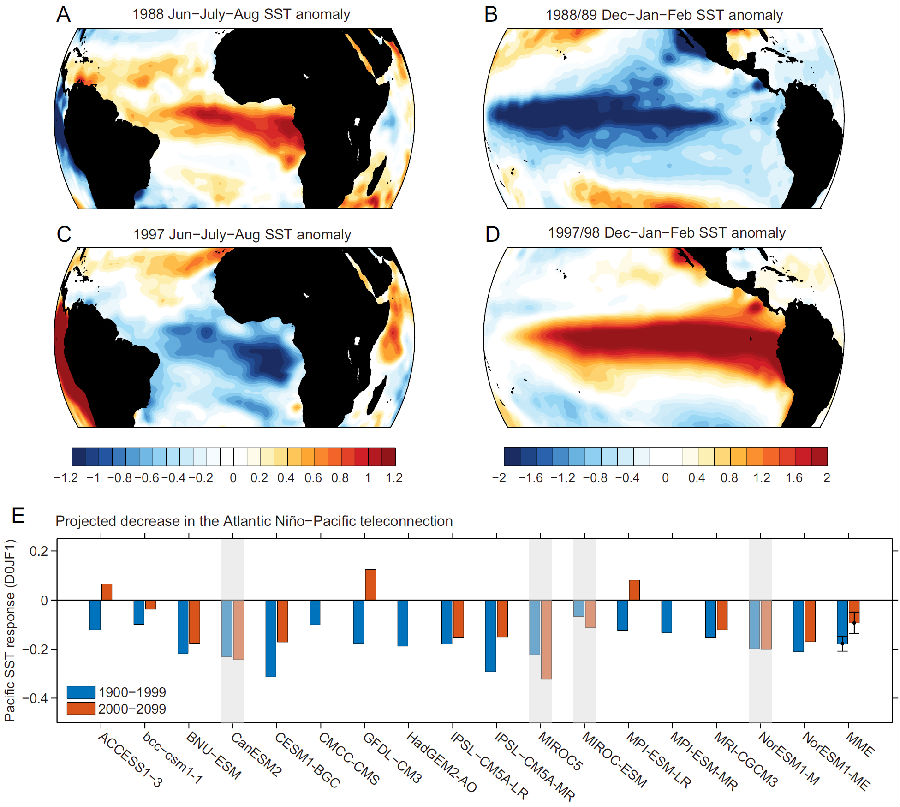Published in Science Advances on 21 August 2019
Sea surface temperature variability in the equatorial eastern Atlantic, which is referred to as an Atlantic Niño (Niña) at its warm (cold) phase and peaks in boreal summer, dominates the interannual variability in the equatorial Atlantic. By strengthening of the Walker circulation, an Atlantic Niño favors a Pacific La Niña, which matures in boreal winter, providing a precursory memory for El Niño–Southern Oscillation (ENSO) predictability. How this Atlantic impact responds to greenhouse warming is unclear. Here, we show that greenhouse warming leads to a weakened influence from the Atlantic Niño/Niña on the Pacific ENSO. In response to anomalous equatorial Atlantic heating, ascending over the equatorial Atlantic is weaker due to an increased tropospheric stability in the mean climate, resulting in a weaker impact on the Pacific Ocean. Thus, as greenhouse warming continues, Pacific ENSO is projected to be less affected by the Atlantic Niño/Niña and more challenging to predict.

Figure. (A) 1988 Atlantic Niño, (B) 1988/89 extreme La Niña, (C) 1997 Atlantic Niña, (D) 1997/98 extreme El Niño, (E) Projected decrease in the Atlantic Niño-Pacific connection over the present-day (1900-1999) and future (2000-2099) 100-year periods in the 17 selected CMIP5 models.
Citation: F. Jia, W. Cai, L. Wu, B. Gan, G. Wang, F. Kucharski, P. Chang, N. Keenlyside, Weakening Atlantic Niño-Pacific connection under greenhouse warming. Sci. Adv. 5, eaax4111 (2019).
Link: https://advances.sciencemag.org/content/5/8/eaax4111